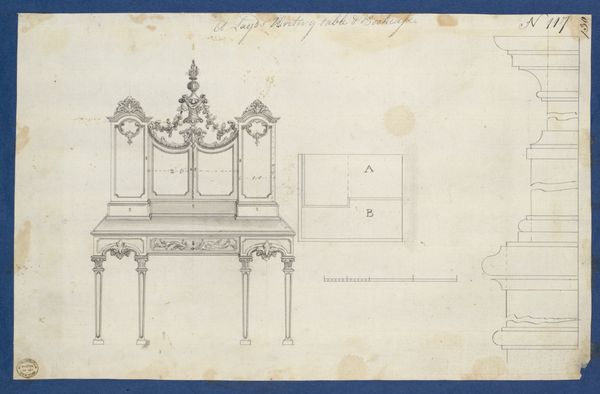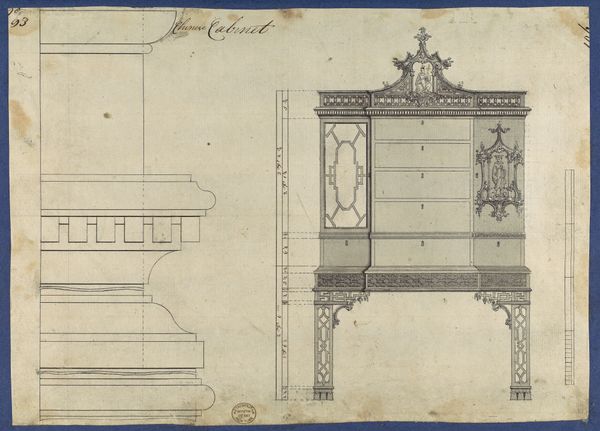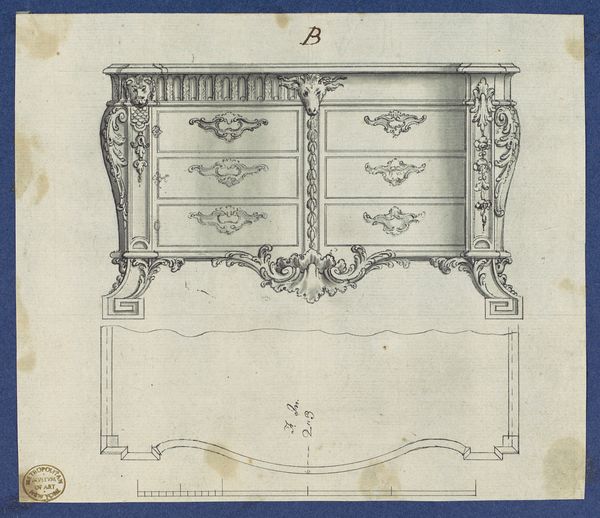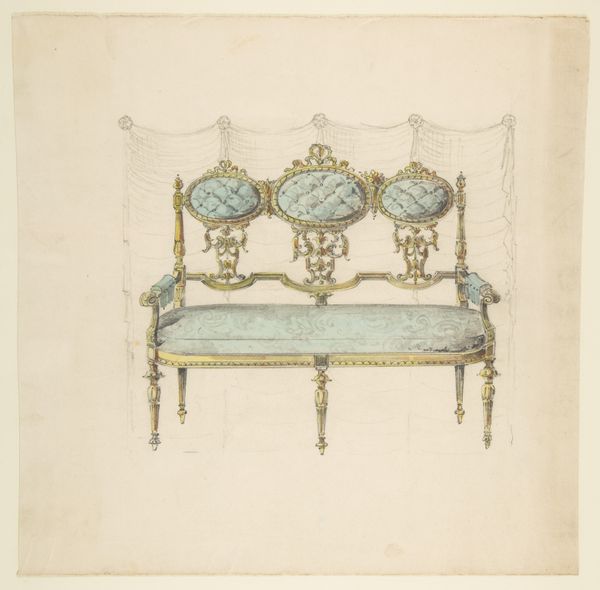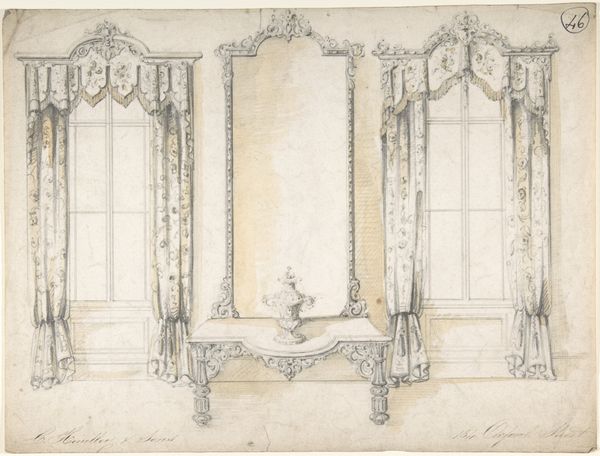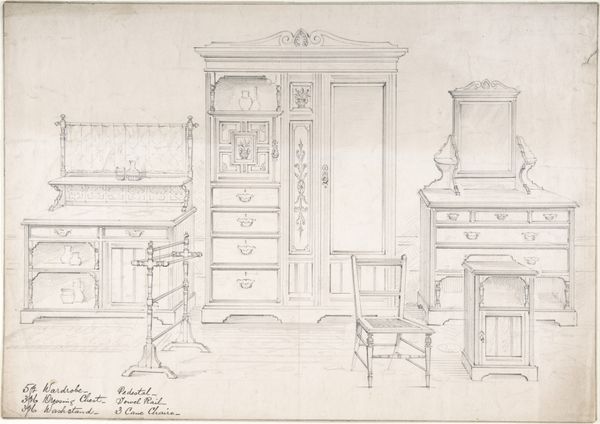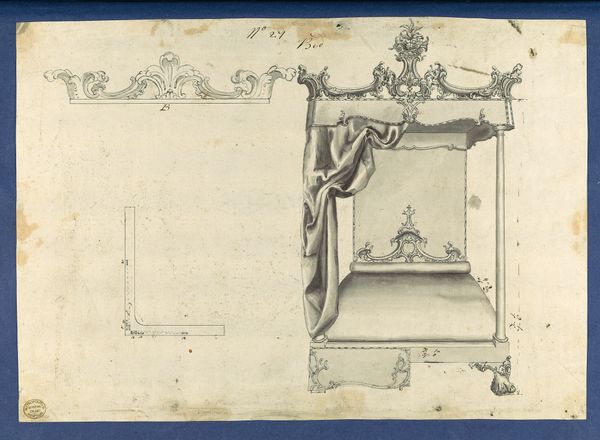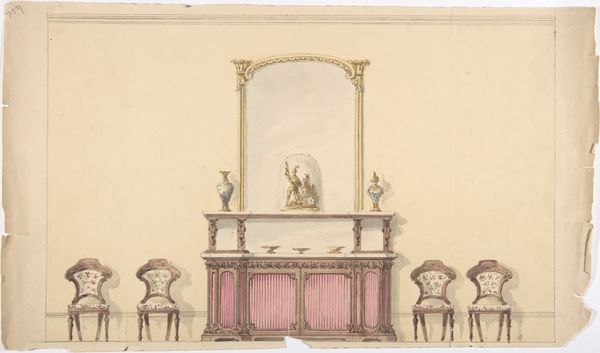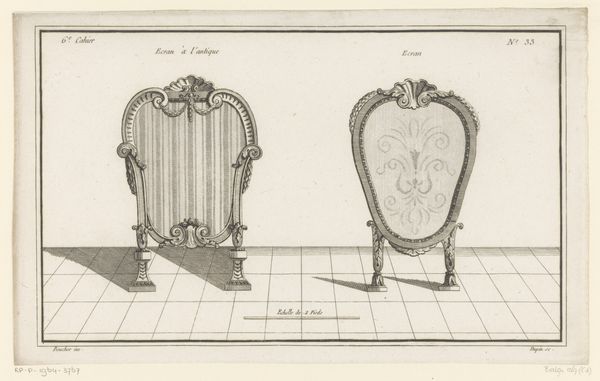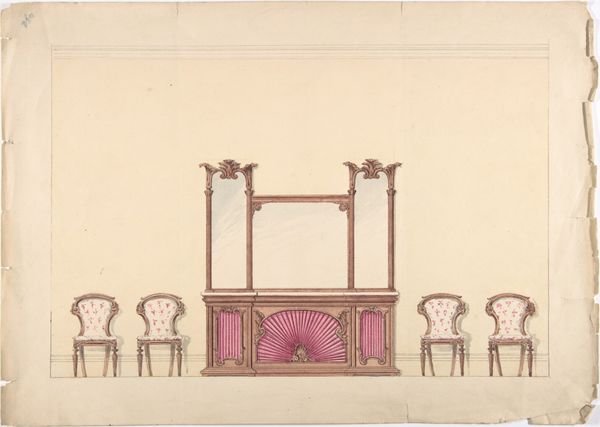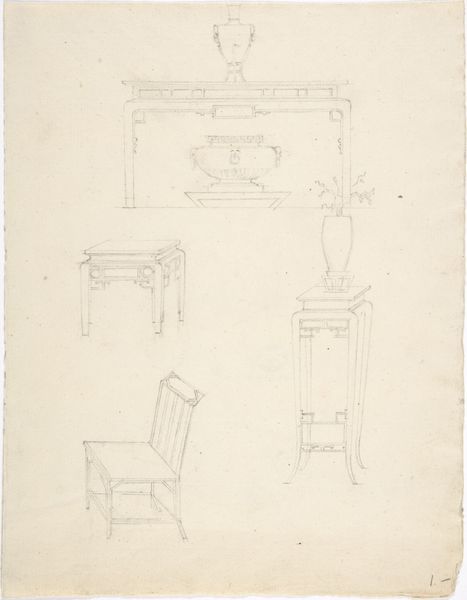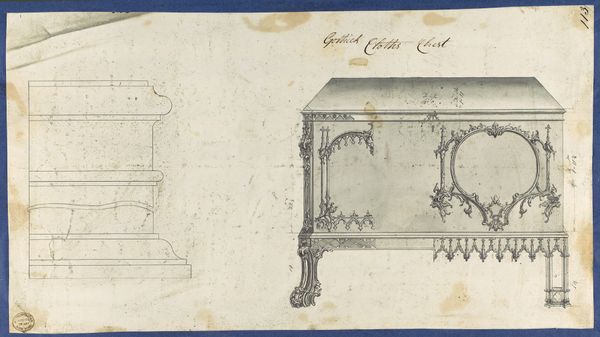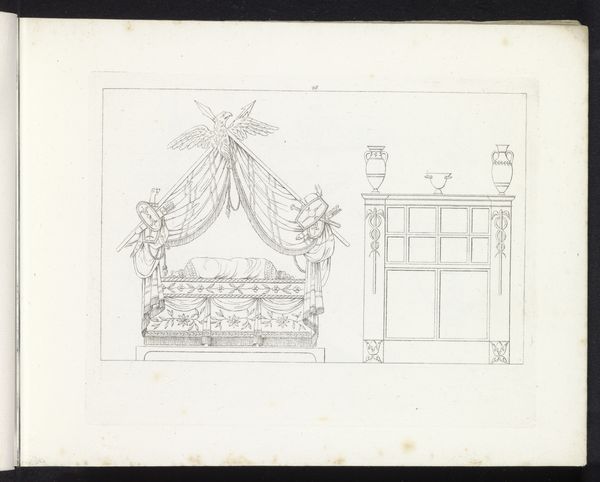
A Lady's Dressing Table, from Chippendale Drawings, Vol. II 1761
0:00
0:00
drawing, print
#
drawing
#
table
#
neoclacissism
# print
#
furniture
#
decorative-art
Dimensions: sheet: 8 3/16 x 12 1/2 in. (20.8 x 31.7 cm)
Copyright: Public Domain
Curator: This piece immediately strikes me as meticulously planned yet undeniably whimsical. Editor: You've articulated my thoughts exactly. We’re looking at "A Lady's Dressing Table, from Chippendale Drawings, Vol. II," created by Thomas Chippendale around 1761. It’s currently housed here at The Met. Curator: Yes, and the drawing provides such incredible insight into the design process behind decorative arts of the time, doesn't it? Look at how he integrates Neoclassical elements within this ornate piece. It whispers of the intricate relationship between elite women, their daily rituals, and societal expectations. The dressing table as a stage! Editor: I’m drawn to the detailed renderings of the ornate carvings. Note how the light is implied through varied line weights, giving depth to the cherubic figures perched atop the mirror frame. And observe the technical details present in the auxiliary sketch of the drawers. Curator: Those cherubs aren’t simply decorative, they represent putti – symbols of love and vanity so enmeshed in the visual language surrounding femininity during that era. Each scroll and flourish, especially in that draped swag at the front, highlights the luxury afforded to women who could claim such a space. Consider this in contrast to women without means at the time, it underscores deep socio-economic rifts and patriarchal structures influencing domestic life. Editor: Indeed, I appreciate that you brought it to that direction; and I think without the technical rendering of how the object is supposed to work, its purpose can get overlooked. Curator: Looking at it again, it's easy to imagine the daily life that such a piece facilitated. How performative was a lady's toilette, for herself, and society? Editor: I think we agree on the piece’s capacity to suggest both design and a portrait of a woman's domestic life back in the era, I hope our listeners feel the same way.
Comments
No comments
Be the first to comment and join the conversation on the ultimate creative platform.
